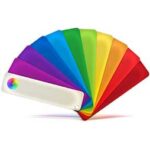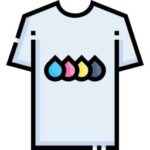Dtg Printing Tools
| ARTWORK GUIDE | COLOR SWATCHES | TEMPLATES| COPY RIGHTS | TIPS | + RESOURCES |
Here are some tips for preparing artwork for direct-to-garment (DTG) printing:
- File format/ type: Use a PDF file format, or a PNG with a transparent background for the best compatibility with DTG printers.
- Colors: Be aware colors may appear different on screen compared to the printed result, so adjust color saturation and brightness accordingly.
- Resolution: Use an image resolution of at least 300 (DPI) to achieve sharp details in your prints.
- Image quality: Use high-quality images and improve low-quality JPGs. Be careful with images choose from Google.
- Vector graphics: Use vector graphics as much as possible.
- Text: Convert all text to outlines.
- Fonts: Embed all fonts or convert to vector paths.
- Image layers: Save the artwork as a single-layered image.
- Sharpening: Sharpen the image.
Key points for DTG printing:
-
Fabric considerations: 100% cotton garments usually produce the best results, while blends may require adjustments to ink settings.
-
Test prints: Always print a test sample on the fabric you intend to use before committing to a full order.
-
Design complexity: DTG printing excels with intricate designs, gradients, and complex color palettes.
-
Printer settings: Understand and adjust printer settings like ink volume and print resolution based on the fabric type and design.
-
Design software proficiency: Master graphic design software like Adobe Illustrator or Photoshop to create optimal artwork for DTG printing.
Important aspects to consider:
- Avoid pixelated images: Low-resolution images will appear blurry and pixelated when printed. Careful with images pick up online like Google.
- Check for color out of gamut issues: Some color combinations might not translate well to the DTG printer, so review color palettes before print.
- Print placement: Be mindful of where you place your design on the garment, considering seams and uneven surfaces.




